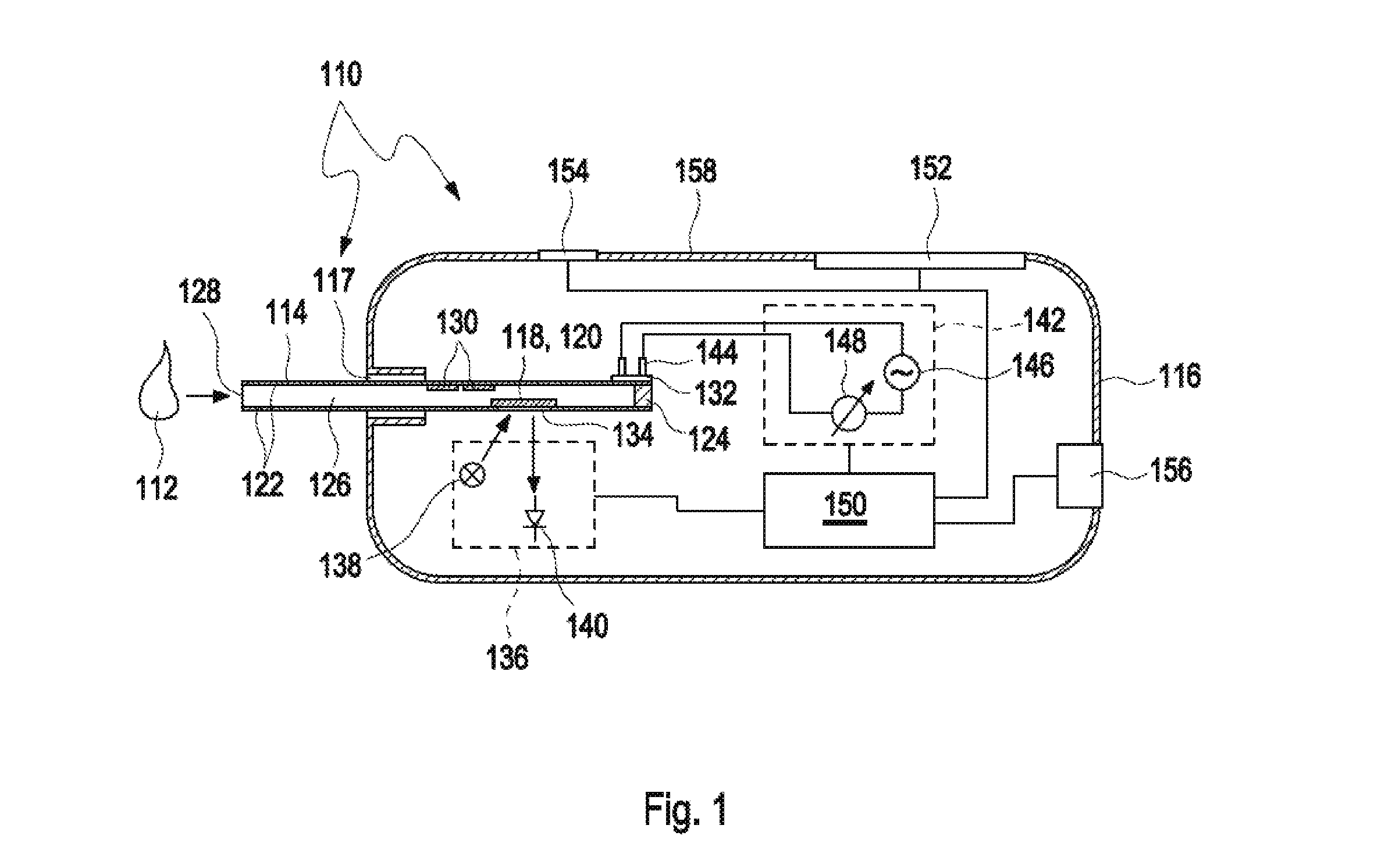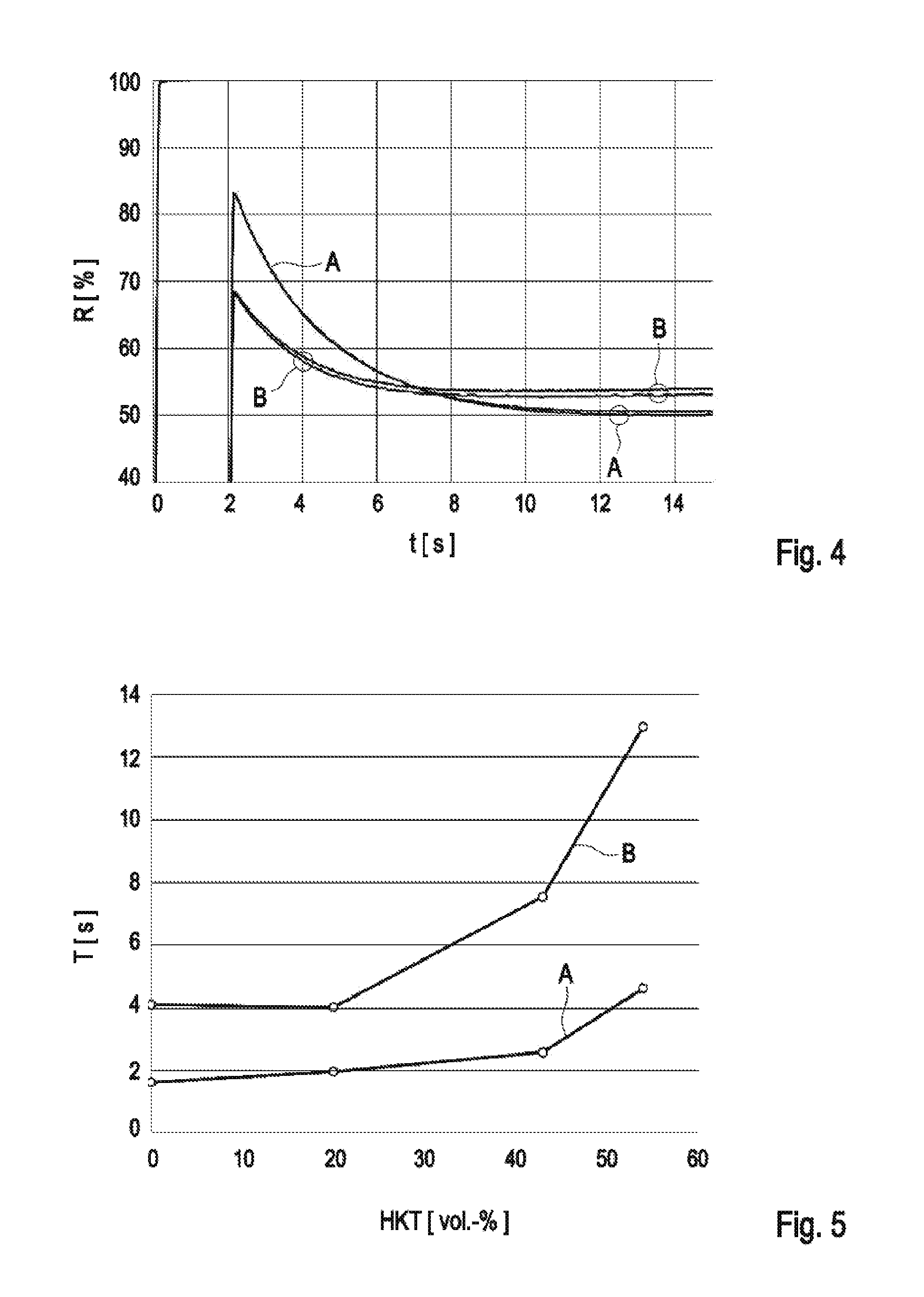Method and system for detecting an analyte in a body fluid
a body fluid and analyte technology, applied in the field of body fluid detection methods and systems, can solve the problems of hampered measurement of a soluble analyte in a suspension additionally comprising at least one particulate compound, methods and devices known in the art are not suited to take into account, and the measurement of a soluble analyte in a suspension is hampered
- Summary
- Abstract
- Description
- Claims
- Application Information
AI Technical Summary
Benefits of technology
Problems solved by technology
Method used
Image
Examples
embodiment 1
[0230]A method for detecting at least one analyte in a body fluid, the method comprising the following steps:[0231]a) performing an optical measurement, wherein at least one test chemical is contacted with the body fluid, wherein the test chemical is an optical test chemical and is adapted to perform at least one detection reaction in the presence of the analyte, wherein at least one optically detectable property of at least one of the body fluid and the test chemical is changed due to the detection reaction, wherein at least one optical measurement value is generated;[0232]b) performing at least one impedance measurement, wherein at least two impedance measurement electrodes are used, wherein at least one alternating electrical signal is applied to the body fluid via the impedance measurement electrodes and wherein at least one answer signal is recorded, wherein at least one impedance measurement value is generated;[0233]c) performing at least one evaluation step, wherein, in the e...
embodiment 2
[0234]The method according to the preceding embodiment, wherein step c) comprises at least one failsafe step, wherein, in the failsafe step, one or both of the optical measurement value or the impedance measurement value are used.
embodiment 3
[0235]The method according to the preceding embodiment, wherein the failsafe step comprises comparing at least one of the optical measurement value or the impedance measurement value or one or more secondary measurement values derived thereof with at least one threshold value, specifically with at least one out-of-range threshold value.
PUM
 Login to View More
Login to View More Abstract
Description
Claims
Application Information
 Login to View More
Login to View More - R&D
- Intellectual Property
- Life Sciences
- Materials
- Tech Scout
- Unparalleled Data Quality
- Higher Quality Content
- 60% Fewer Hallucinations
Browse by: Latest US Patents, China's latest patents, Technical Efficacy Thesaurus, Application Domain, Technology Topic, Popular Technical Reports.
© 2025 PatSnap. All rights reserved.Legal|Privacy policy|Modern Slavery Act Transparency Statement|Sitemap|About US| Contact US: help@patsnap.com



